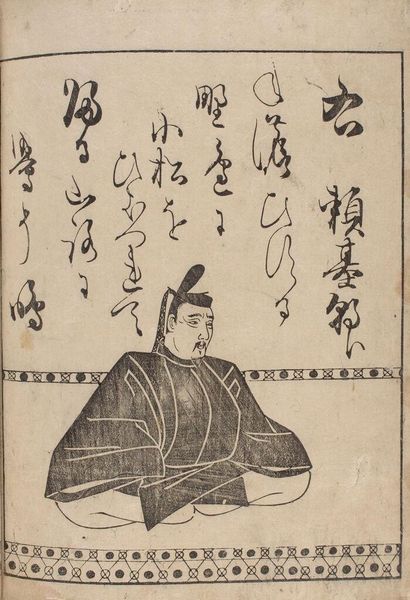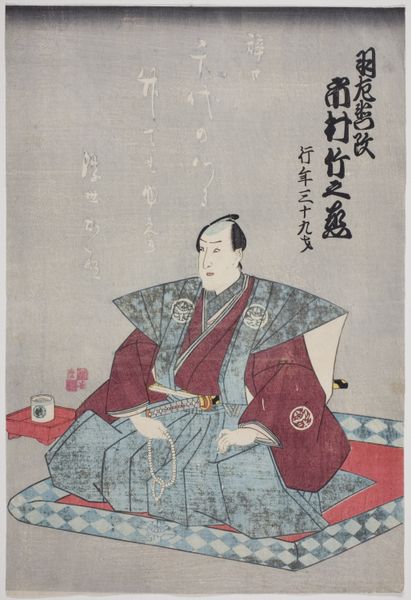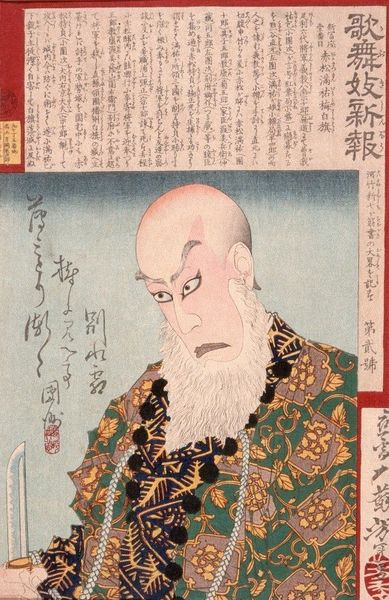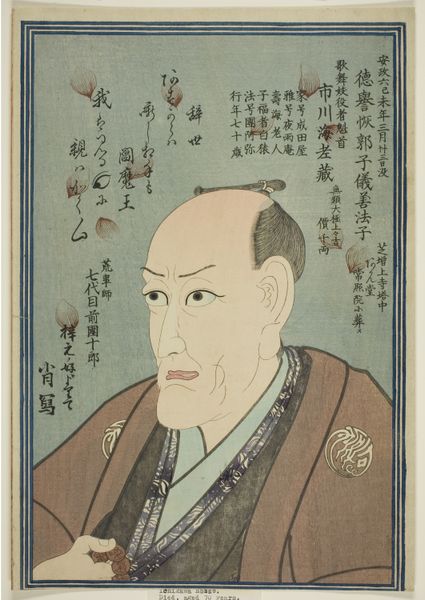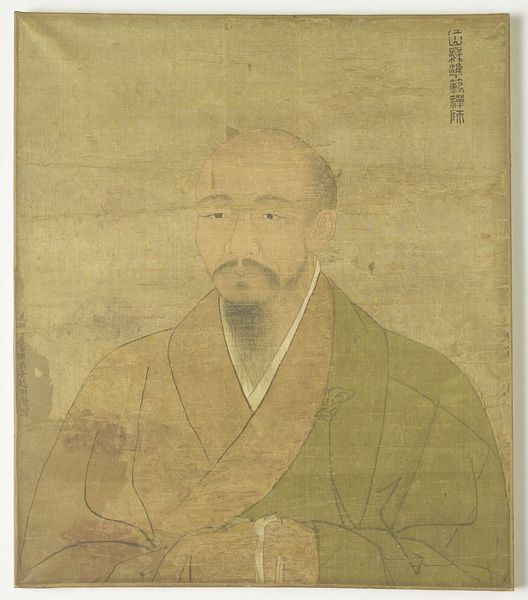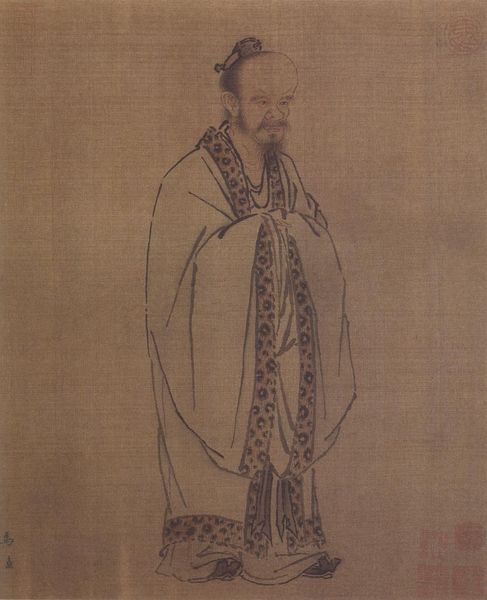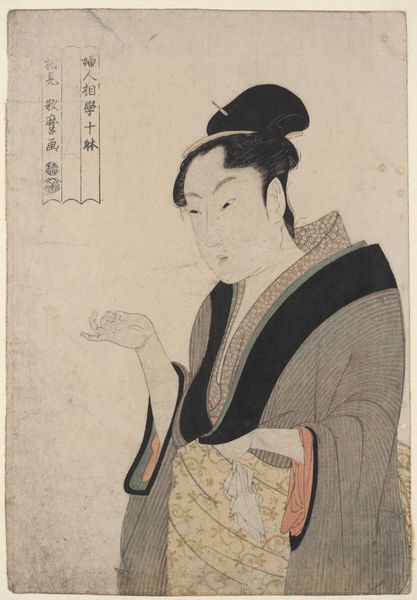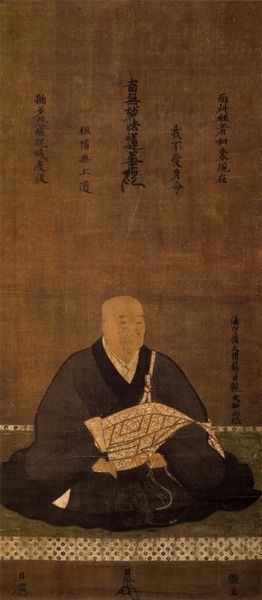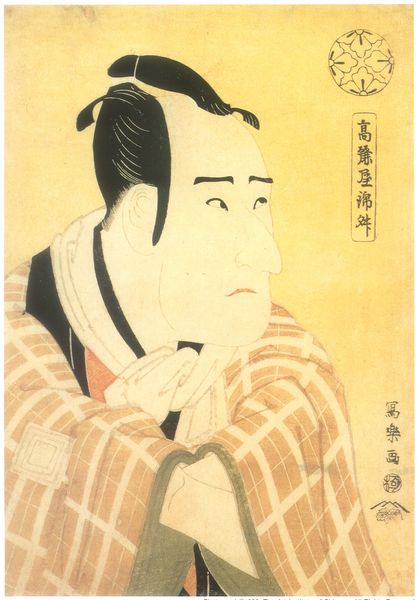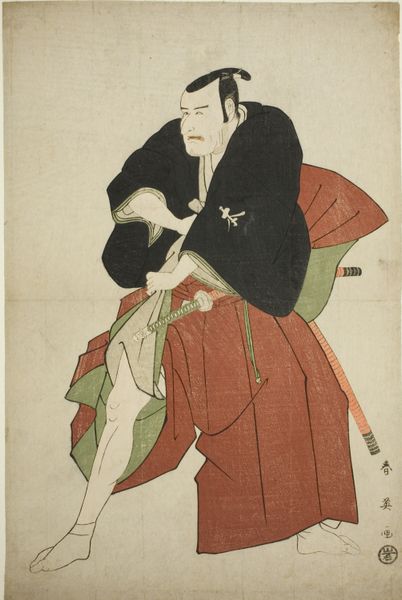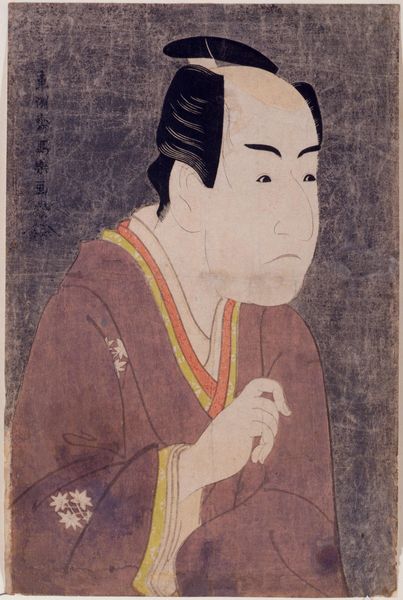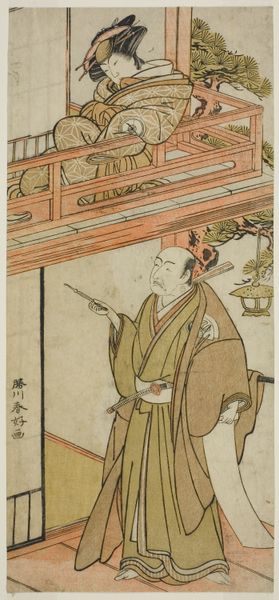
drawing, ink
#
portrait
#
drawing
#
asian-art
#
ukiyo-e
#
ink
Dimensions: 8 1/16 x 5 3/16 in. (20.5 x 13.2 cm) (sheet)
Copyright: Public Domain
Curator: Katsushika Hokusai’s “Portrait of Kan'u,” created around 1816, is a compelling work currently residing here at the Minneapolis Institute of Art. Editor: The texture! Just look at the layering and almost scratchy lines of ink creating such density, particularly in his beard and robes. It gives a real sense of materiality. Curator: Indeed. Kan'u, a historical figure from the Three Kingdoms period of China, was later deified. Hokusai masterfully renders him here. Consider the social context—Japan’s fascination with Chinese history, popular theater, and moral virtues are being manifested through these prints. Editor: Right, and those prints, made with carved woodblocks, had a crucial role to play in accessible art for the masses, moving away from elitist painting traditions. Think about the labor involved in the creation of those woodblocks! The craft is not a 'lesser' form. Curator: Absolutely, though there was undeniably an established hierarchy within Edo period art culture. Hokusai’s masterful command over ukiyo-e techniques elevates this portrait beyond simple commercial illustration, influencing perceptions of morality and warrior culture among the populace. His skilled application shapes not only the public image of Kan’u, but the very reception of that image within a cultural and historical framework. Editor: But it’s so much more immediate than some grand statement on warrior ideals. I find myself staring at his hands, the simple yet compelling act of clasped hands gives an overwhelming sense of quiet, meditative labor. Curator: An interesting observation. This meditative aspect perhaps hints at the blurring lines between warrior and scholar, appealing to a cultivated audience interested in more than mere battlefield exploits. Editor: Yes! That's precisely it – the physical, the historical, and how the common consumer related with the labor. It forces a reassessment of what truly matters. Curator: Precisely, and examining it allows us to see art as more than aesthetics – its active societal purpose. Thank you. Editor: Of course, thank you! Considering these points reveals how crucial it is to consider the process as well as the subject, thank you.
Comments
No comments
Be the first to comment and join the conversation on the ultimate creative platform.
